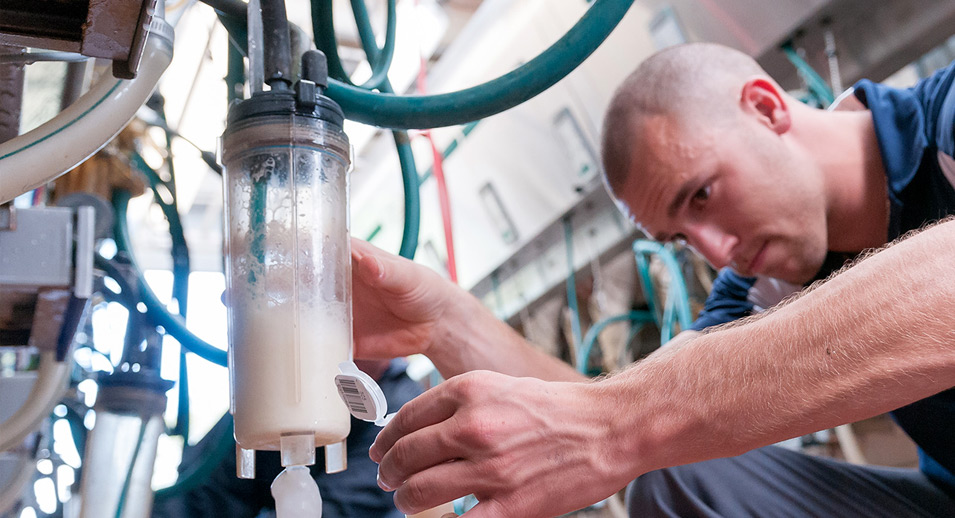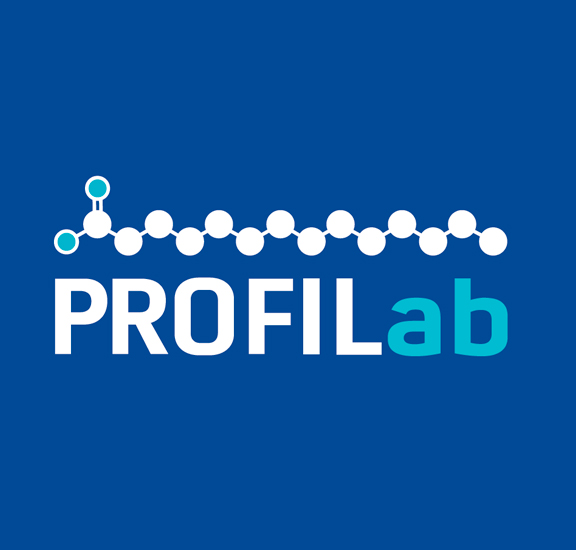The Importance of the de novo Group in Your Fatty Acid Profile
- March 16, 2020
There are three groups of fatty acids, so what makes the de novo group so important? The data from Quebec clearly demonstrates that herds with more de novo fatty acids also have higher fat and protein levels in their milk. This relationship has also been demonstrated elsewhere in the world.
More de novo Fatty Acids = More Fat
This seems straightforward because the de novo fatty acids make up a part of the milk fat. As you can see in Figure 1 if the de novo group goes up, the fat goes up, and this is the case regardless of the cow breed (this graph uses data from Quebec herds on milk recording). There is also some other interesting information here that shows the importance of the connection between de novo fatty acids and milk fat. Even if the de novo group only makes up 25% of the milk fat in terms of quantity, the correlation between the de novo group and the percentage of milk fat is 77%! Therefore, if the de novo fatty acids are low, it is worth looking into why and trying to find a solution.
Figure 1
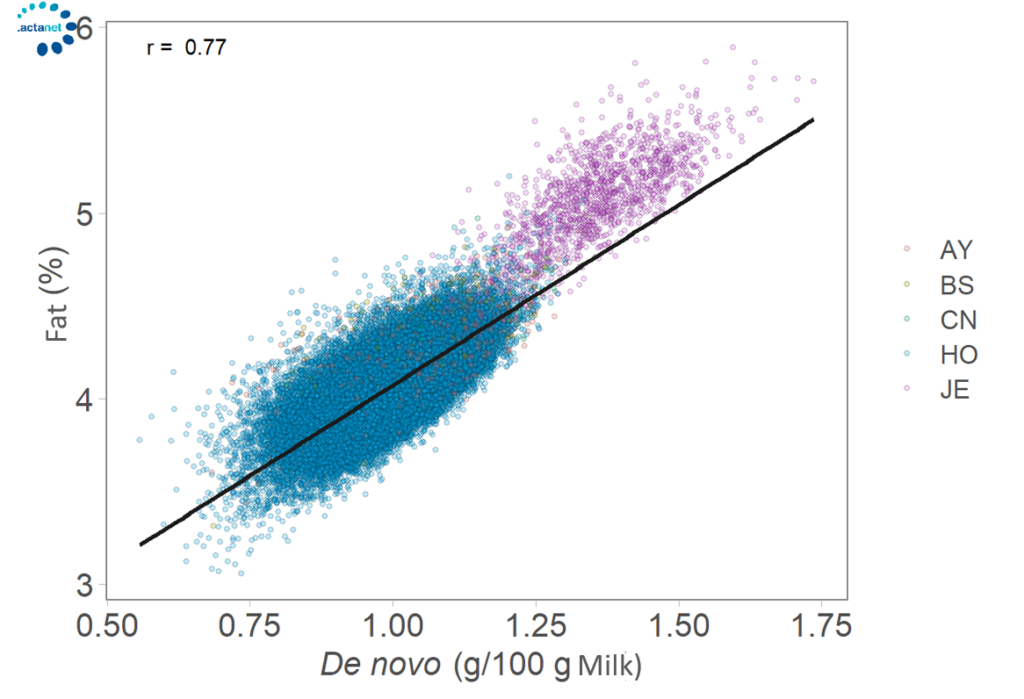
The relationship becomes even stronger when we combine the de novo + mixed fatty acids (Figure 2) therefore, we want both of these fatty acid groups to be high.
Figure 2
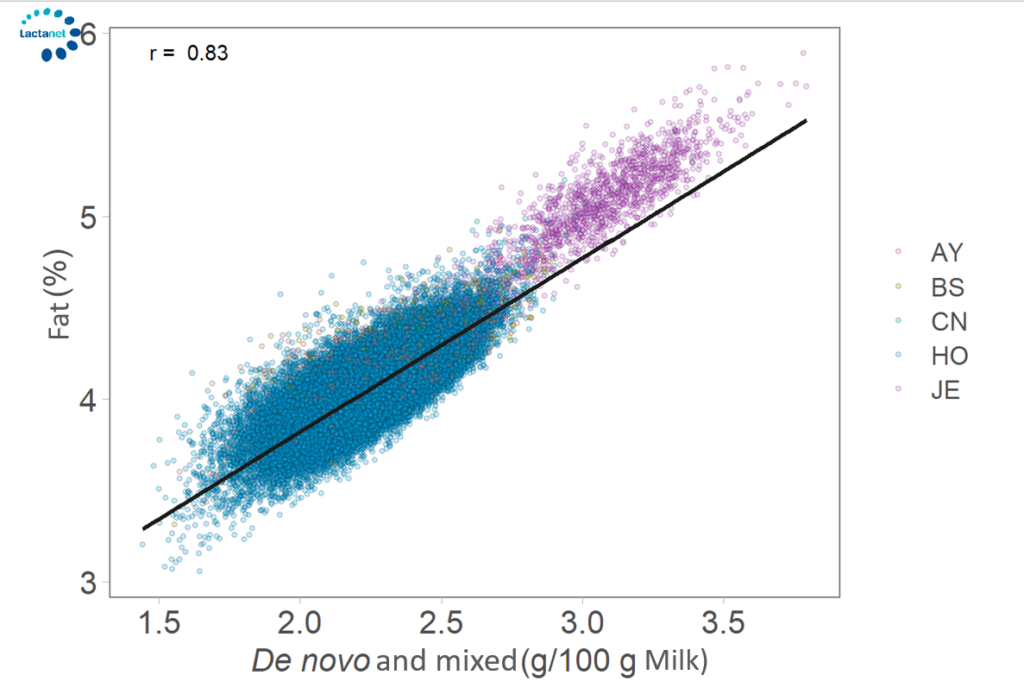
What about the preformed group?
The preformed fatty acids are also connected to milk fat, but less significantly than the de novo group, even though this group of fatty acids makes up almost 40% of the milk fat.
Figure 3
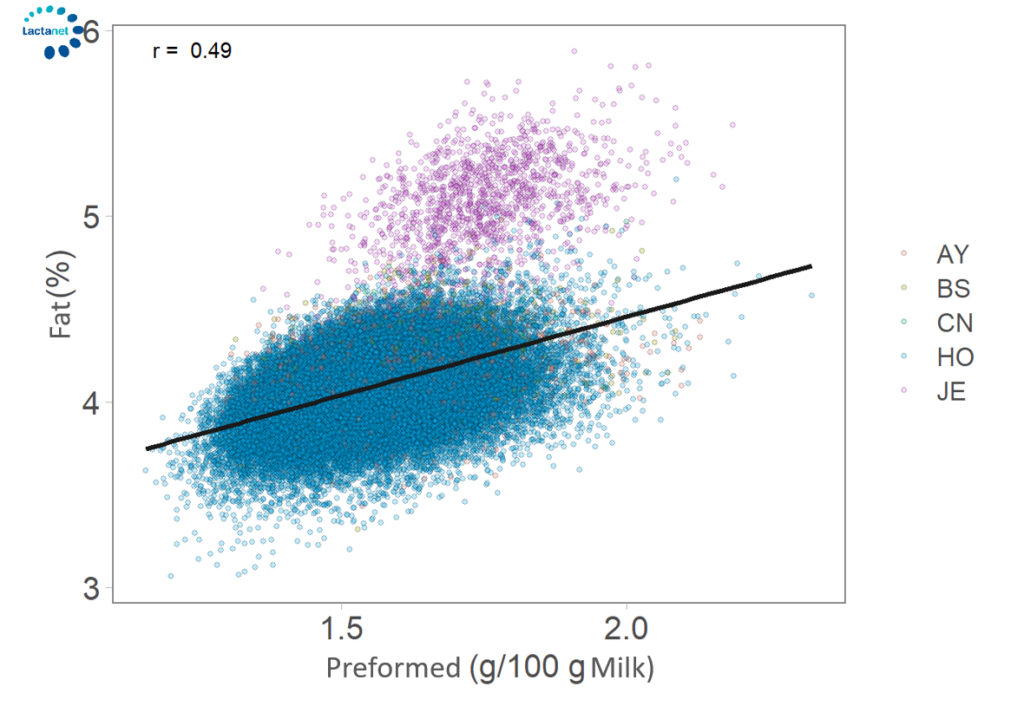
More de novo = More True Protein
Now this is getting interesting!
If the de novo group goes up, the true protein in the milk also goes up. This is proof that the de novo group can be an indicator of rumen health. In fact, rumen fermentation helps cows to use their ration efficiently, and therefore be able to produce the volatile fatty acids that are used to build de novo fatty acids. When the rumen microbes are working well, they can build more microbial protein, which contributes to the synthesis of milk protein as well as any other metabolic functions that require protein, for example the synthesis of lactose (and thus milk!).
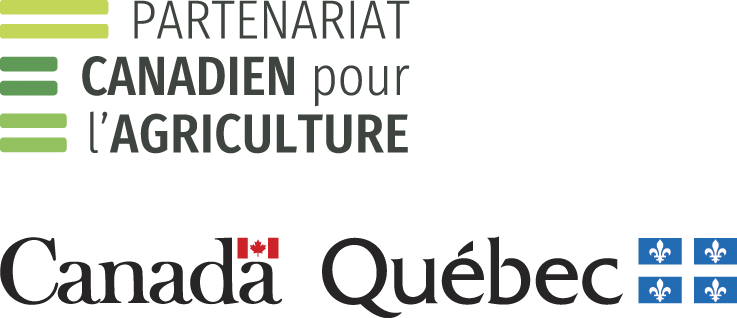
This project is funded through the Innov’Action agri-food program under the Canadian Agricultural Partnership, as part of an agreement between the governments of Canada and Quebec.




